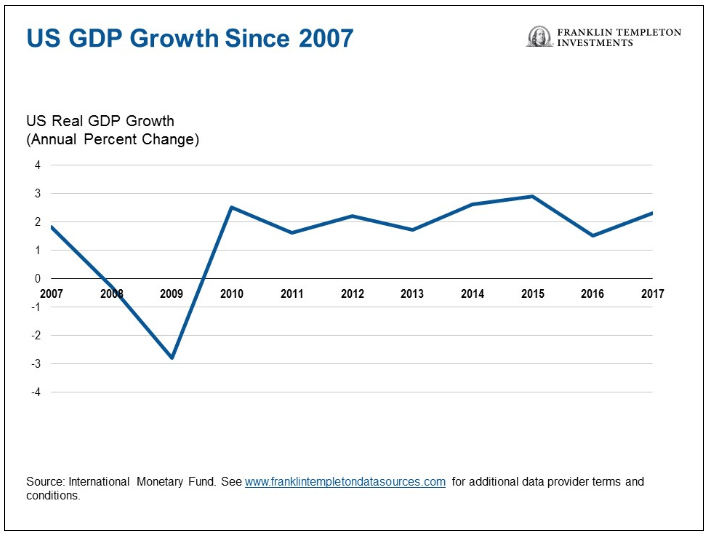Disruption #3: Populism
In recent years, we’ve seen a growing populist movement in the United States and Europe.
In our view, this is a reflection of a rise in individuality alongside widespread mistrust in existing civil societies. Many people feel they have been left out and are starting to question authorities. That may be partly to do with changing demographics.
For example in the United States, the disaffected older generation seems to have been one of the key contingents whose votes fueled the victory of Donald Trump. His supporters included many individuals who found themselves less well off than in the past.
There’s a similar story in Europe where the electoral success of populist parties has contributed to less certainty and more volatility.
Coupled with rising levels of mistrust, we believe economic inertia in Europe and the United States has accelerated the rise in populism.
In the past, the United States enjoyed an average 3 percent gross domestic product (GDP) growth rate over 10-year periods.
As the chart below shows, however, we haven’t seen that level of GDP growth in the United States over the past 10 years.

Stephen H. Dover, CFA, is executive vice president and head of equities at Franklin Templeton Investments.








